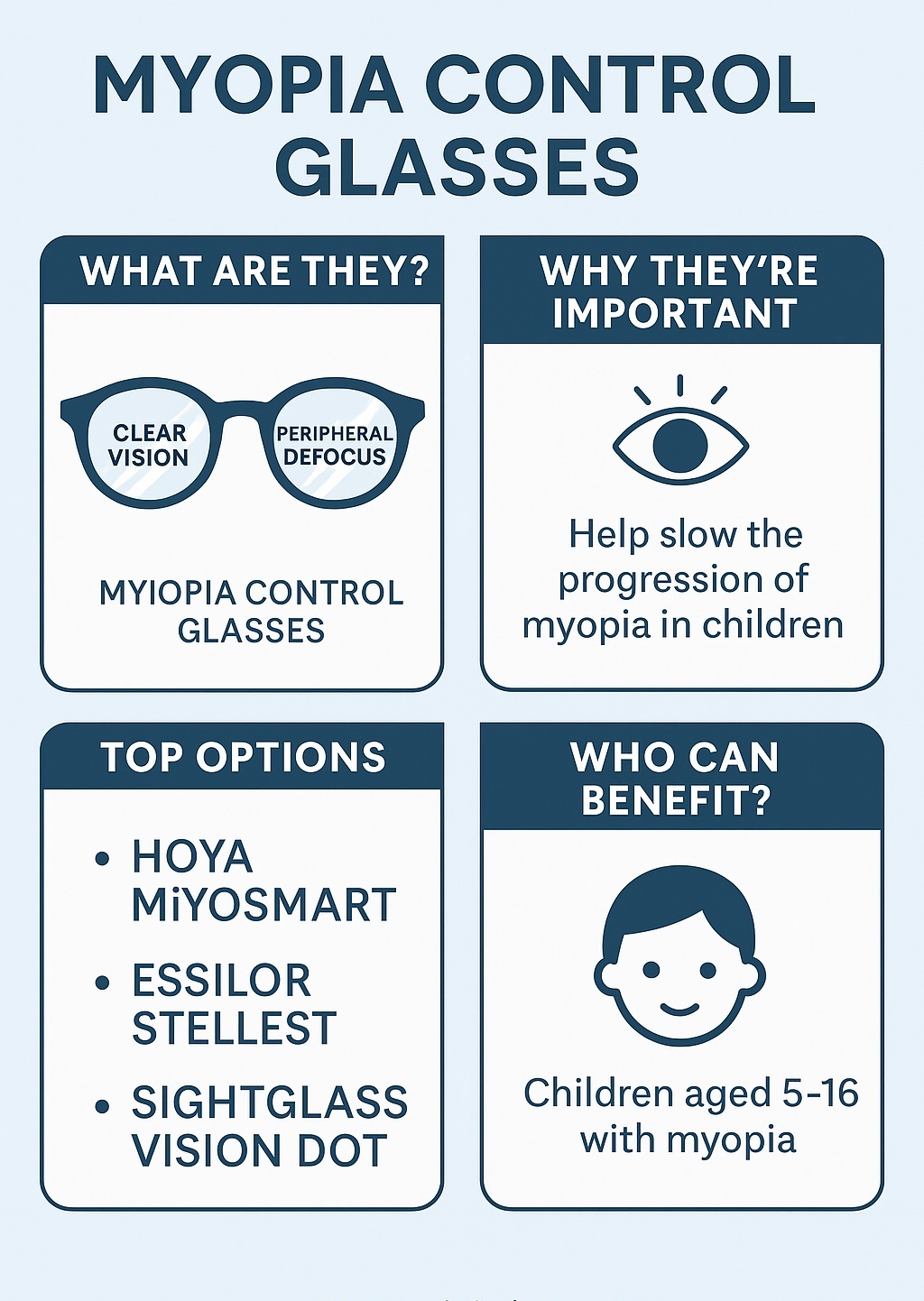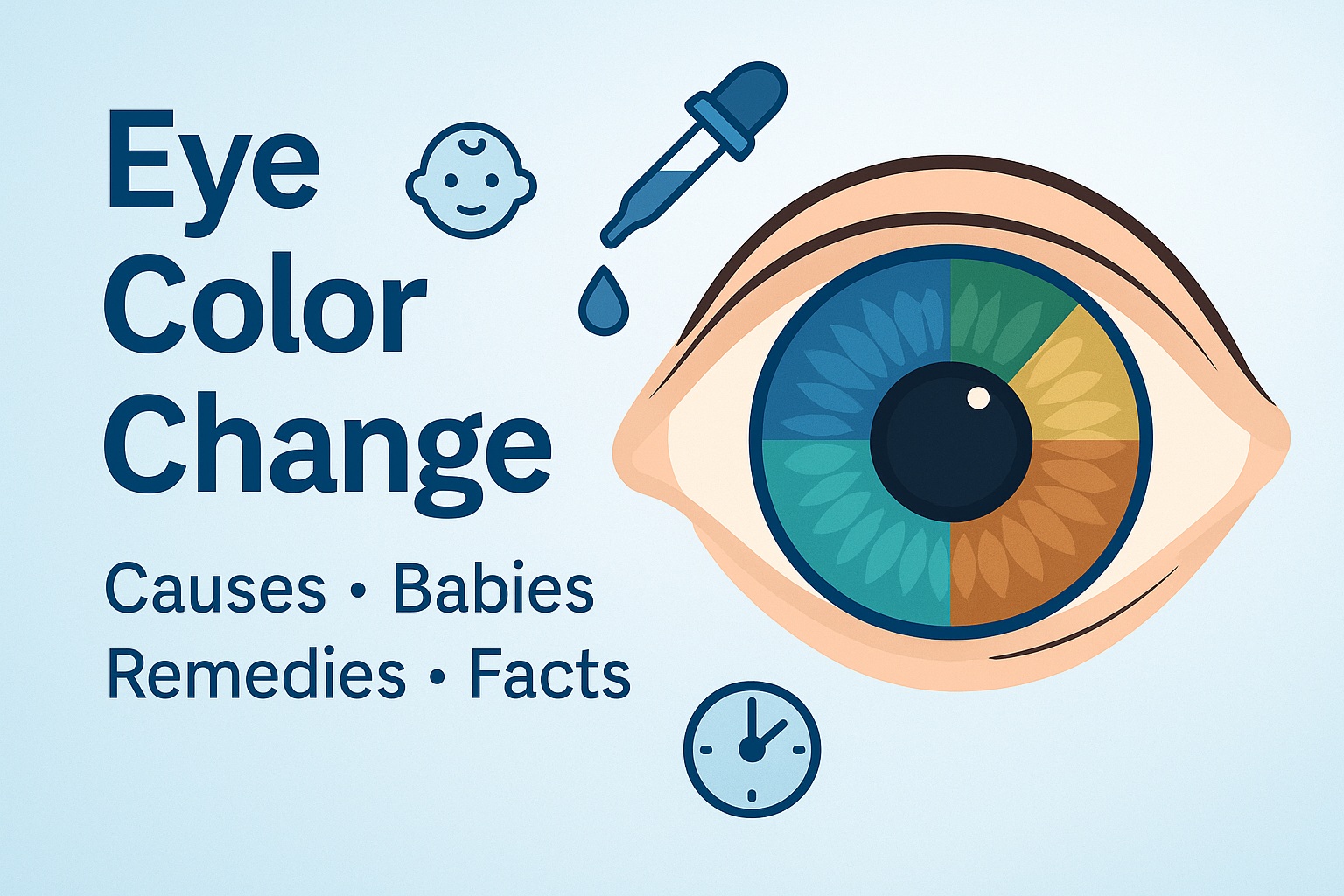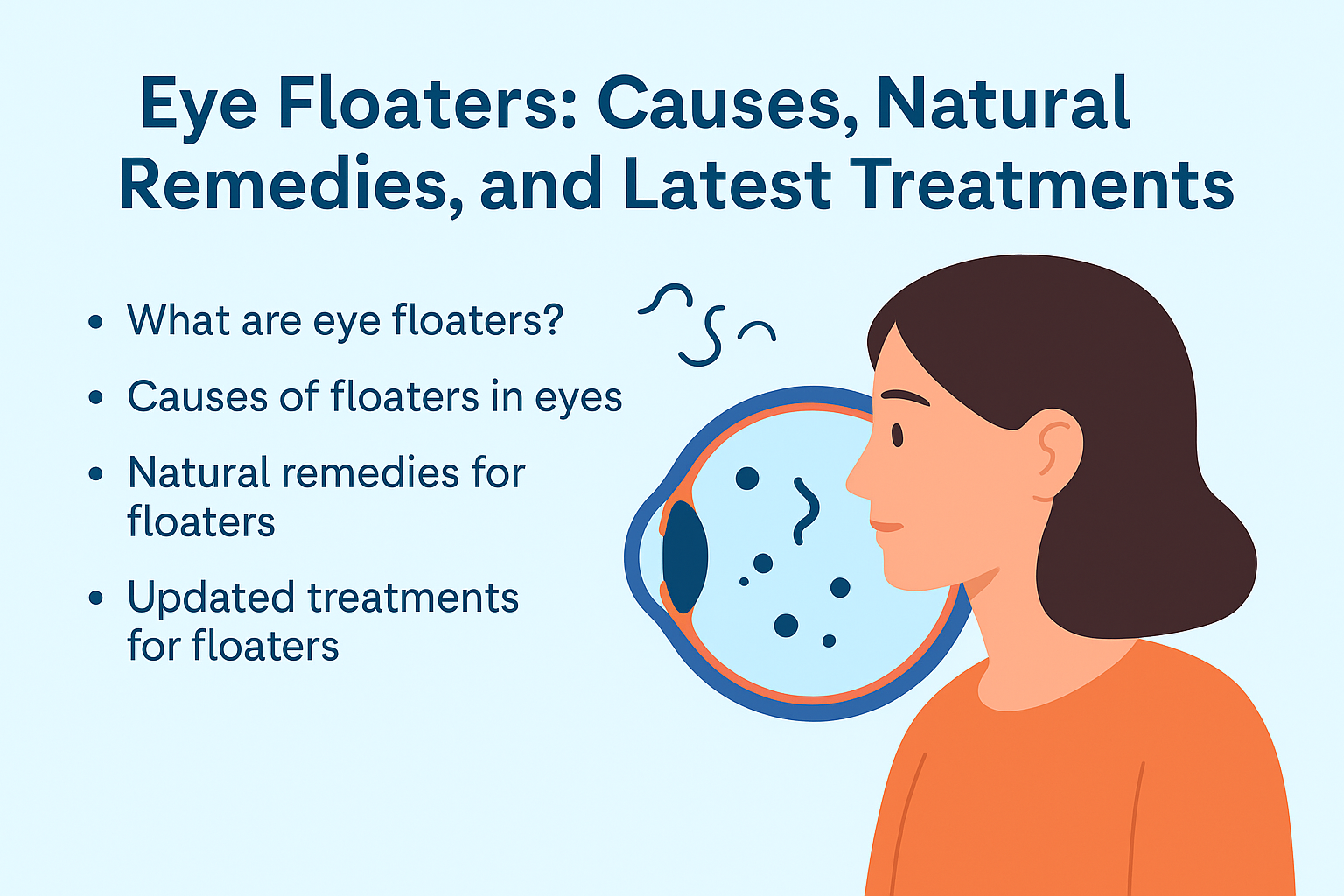Myopia Control Glasses: How They Work & Top Options for Kids in 2025
Published: July 6, 2025
Myopia control glasses are innovative eyewear designed to not only correct vision but also slow the progression of nearsightedness, especially in children.
What Are Myopia Control Glasses?
These glasses use specialized lens designs to provide clear central vision while imposing controlled defocus on the peripheral retina, signaling the eye to slow its elongation — a key driver of worsening myopia.
Why Is Myopia Control Important?
With childhood myopia rising globally, unchecked eye growth increases risks of retinal detachment, macular degeneration, glaucoma, and early cataracts. Controlling progression early safeguards long-term eye health.
How Do They Work?
These lenses employ peripheral defocus: the central zone corrects distance vision, while the outer zones impose slight blur to slow axial growth. This dual-action technology helps guide healthy eye development.
Top Myopia Control Glasses in 2025
1. Hoya MiYOSMART
- Uses D.I.M.S. (Defocus Incorporated Multiple Segments) lens technology
- Clinically shown to slow myopia by up to 60%
- Looks like regular single-vision glasses
2. Essilor Stellest
- Features H.A.L.T. (Highly Aspherical Lenslet Target) technology
- Reduces progression by around 67% in studies
- Provides UV protection and impact resistance
3. SightGlass Vision DOT Technology™
- Uses diffusion lenslets to scatter light and reduce contrast
- Promising early clinical results under evaluation
Who Should Use Myopia Control Glasses?
- Children aged 5–16 with progressive myopia
- Kids at genetic risk (myopic parents)
- Children spending high screen time indoors
Effectiveness & Considerations
Studies report 60–67% reduction in myopia progression over two years versus standard lenses. Individual results vary, and complementary habits like outdoor time and regular breaks enhance outcomes.
Complementary Strategies
- Outdoor activity: At least 2 hours daily
- 20-20-20 rule: Every 20 minutes, look 20 feet away for 20 seconds
- Regular eye exams: Check every 6–12 months
Conclusion
Choosing myopia control glasses early can protect your child’s vision and reduce future complications. Discuss these advanced lens options with your eye care professional to find the best solution for your child.


